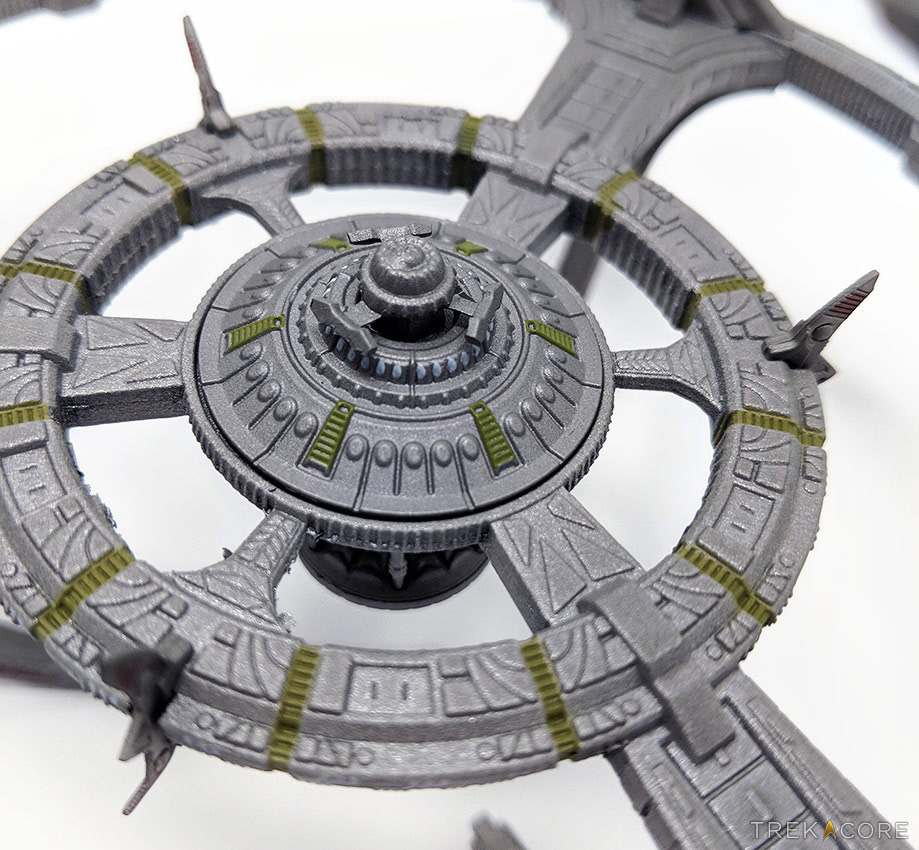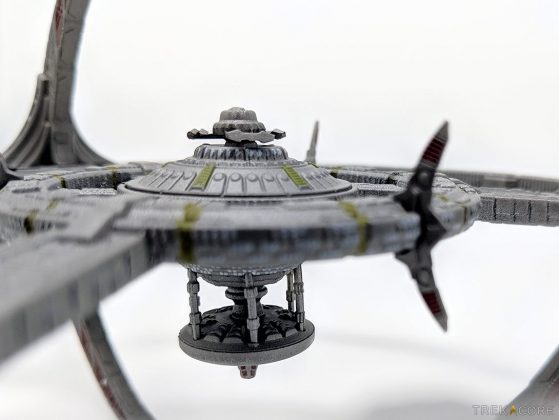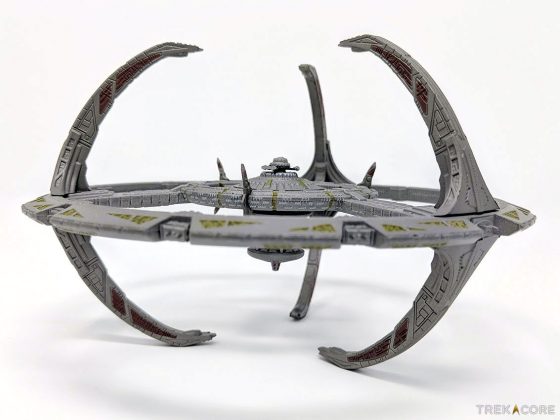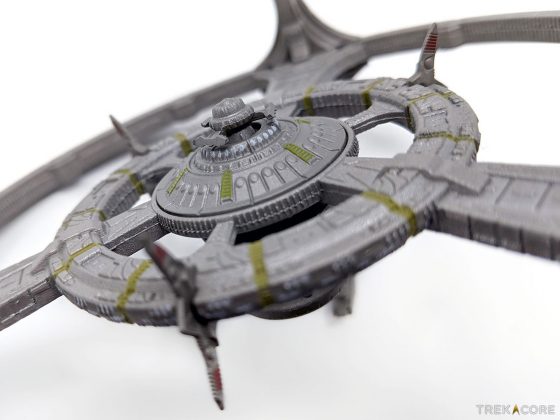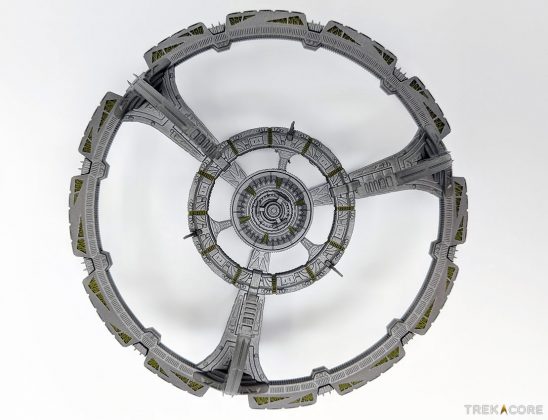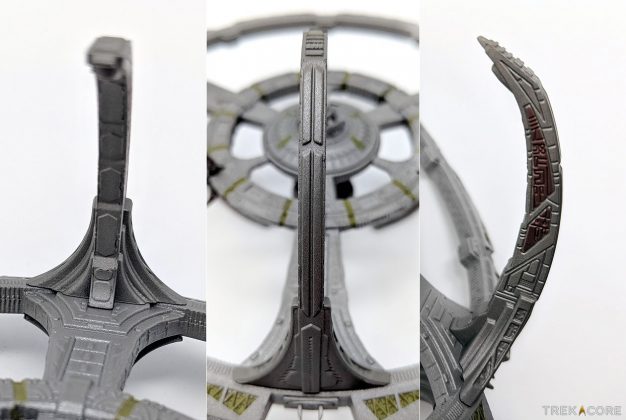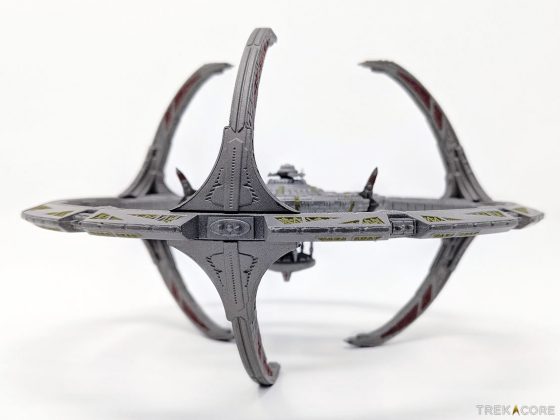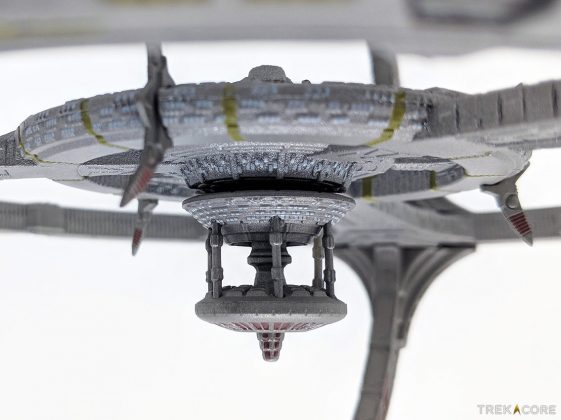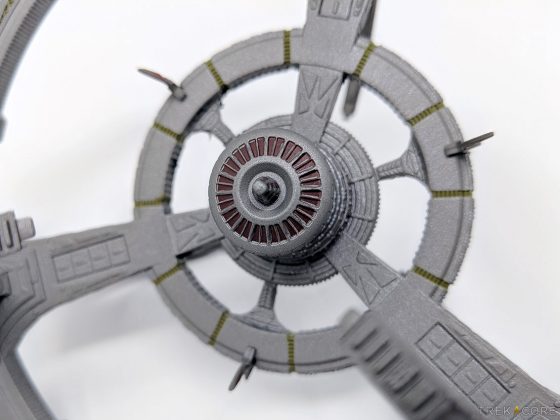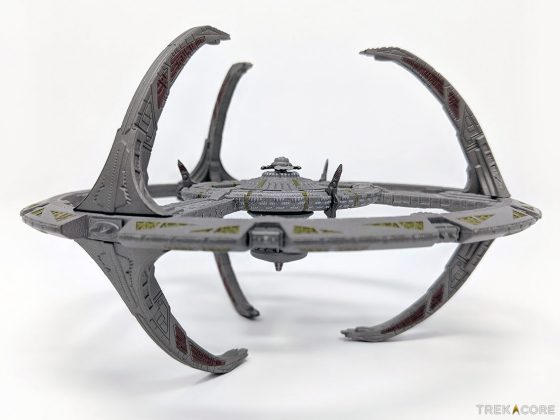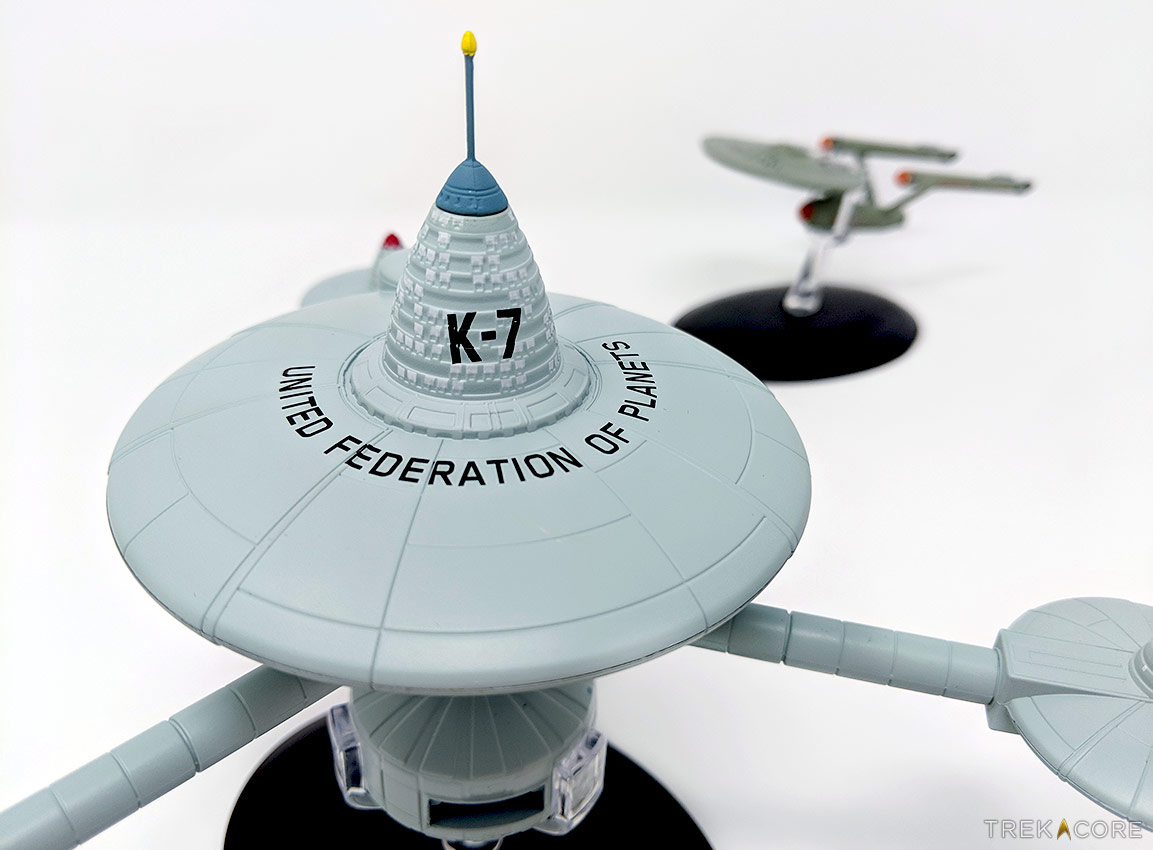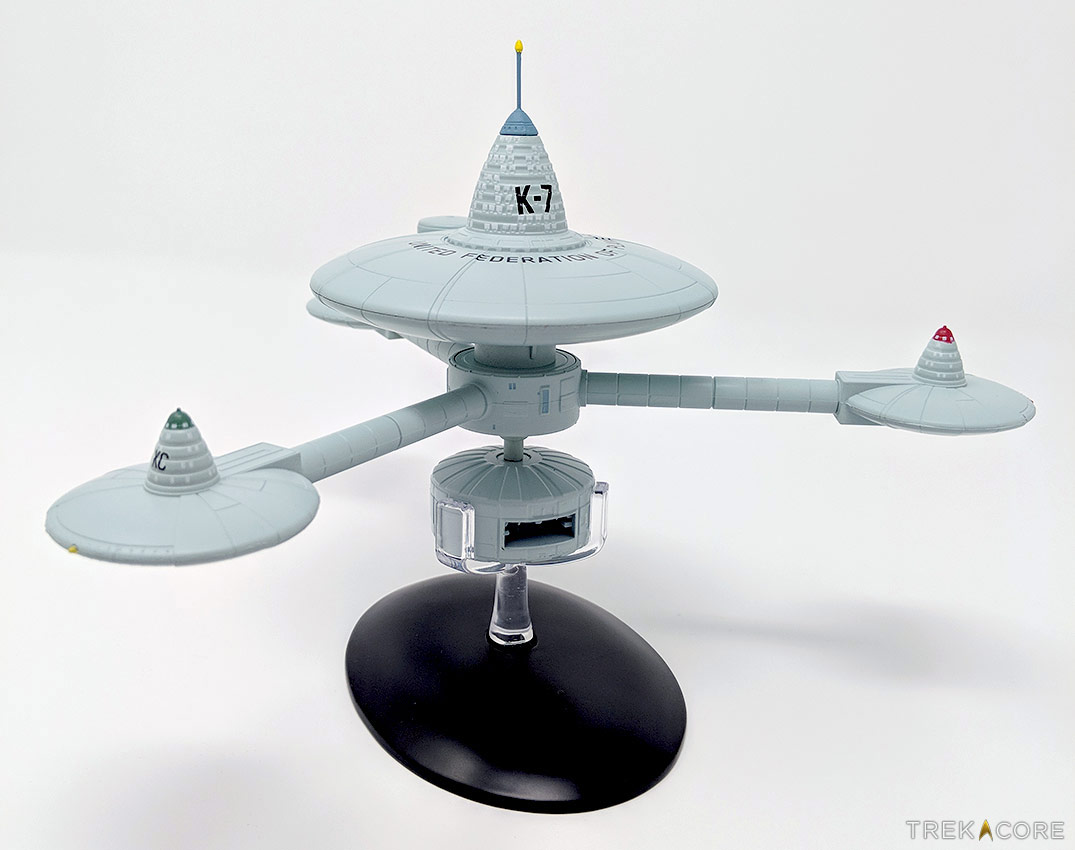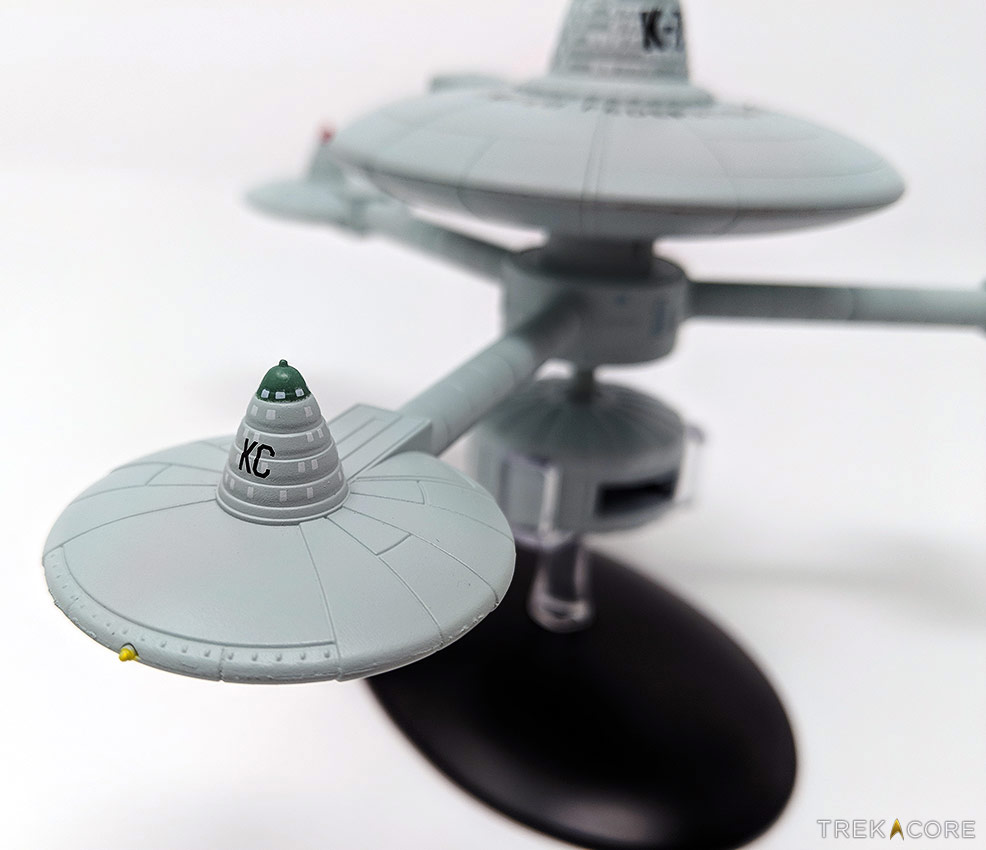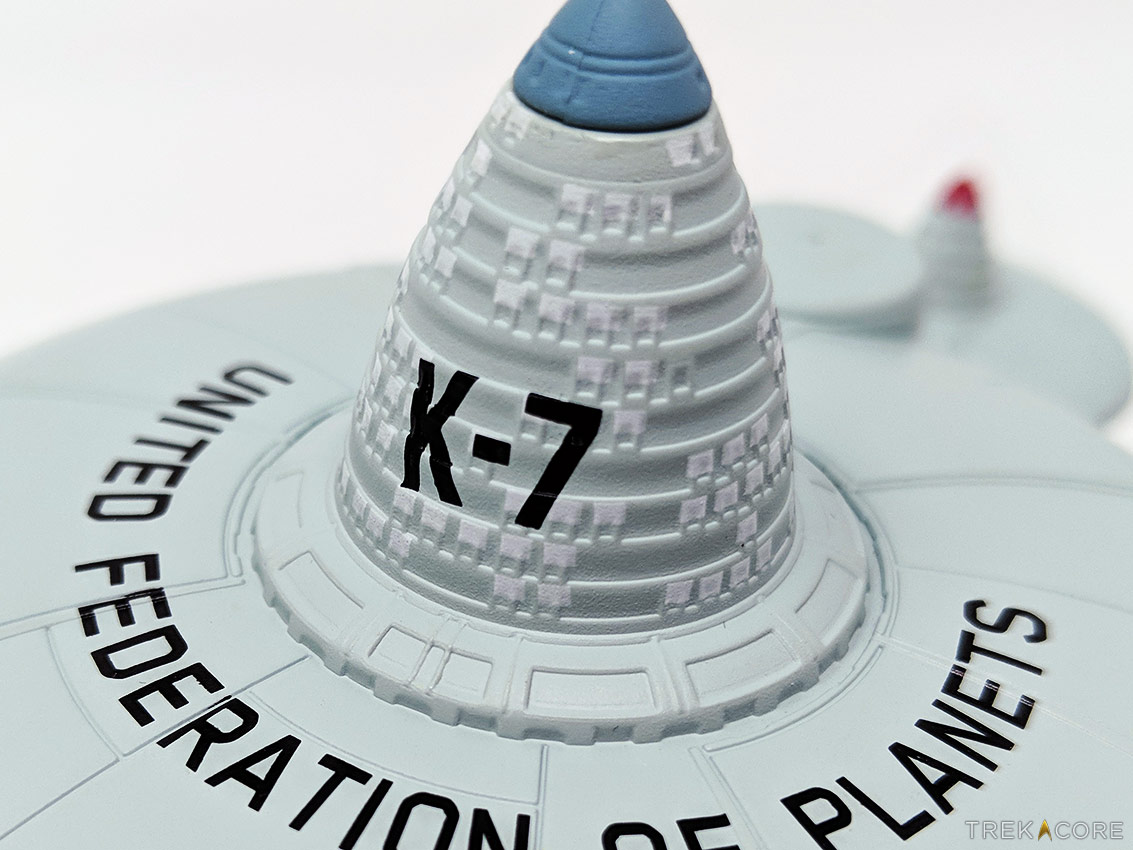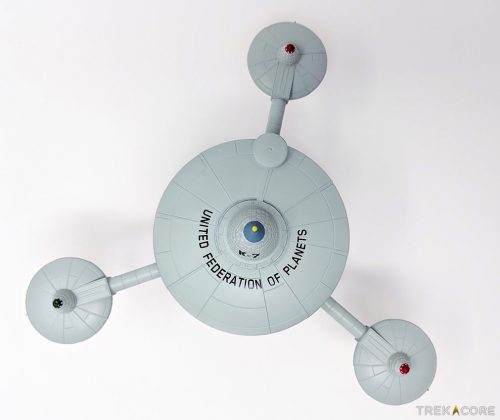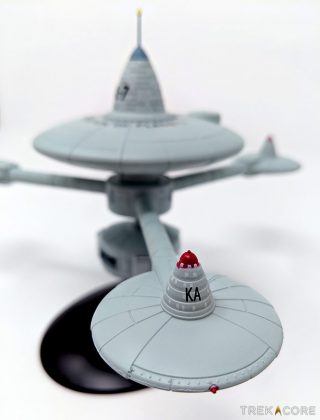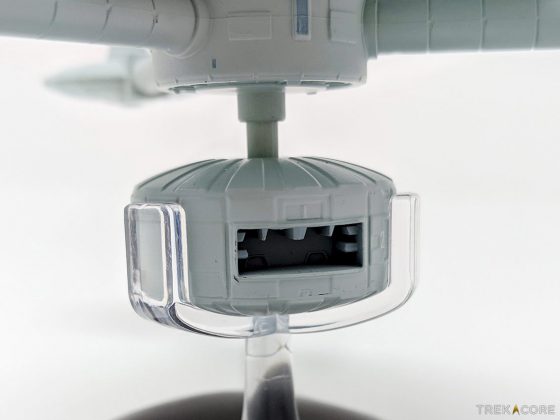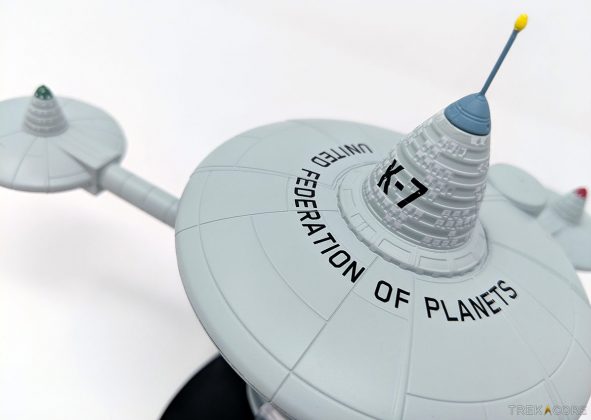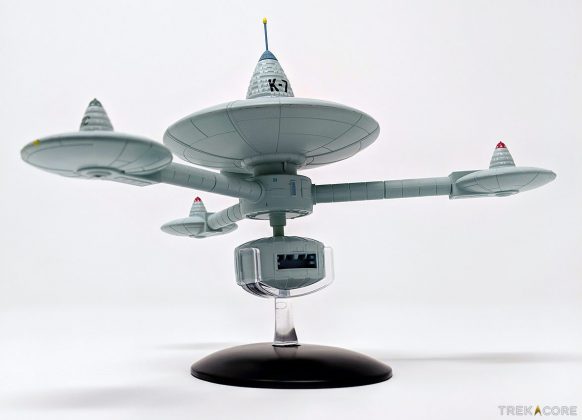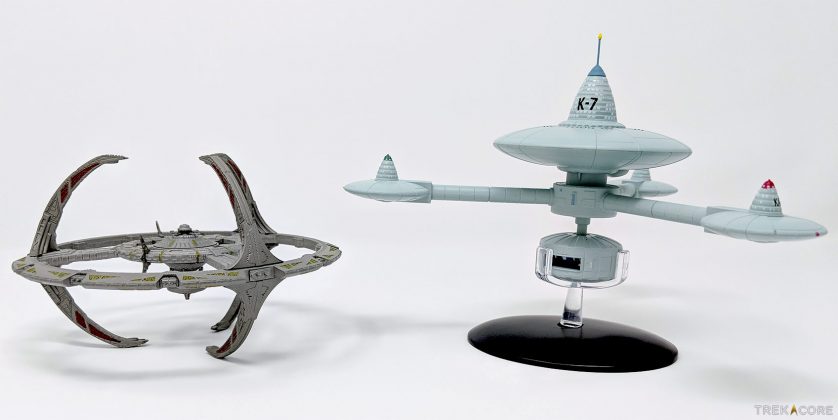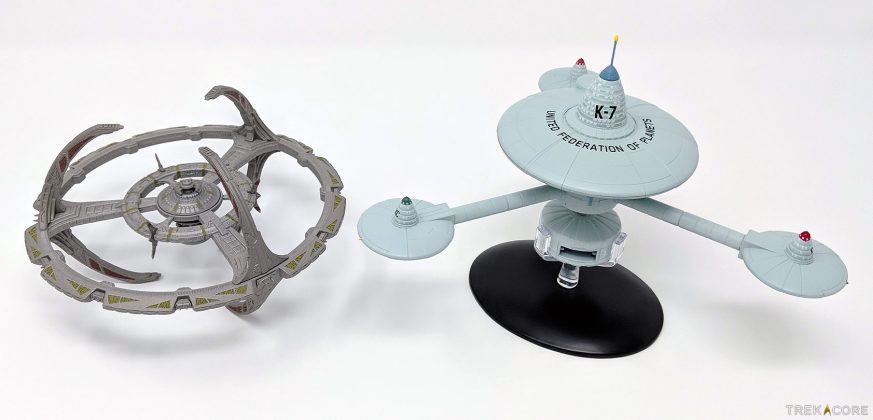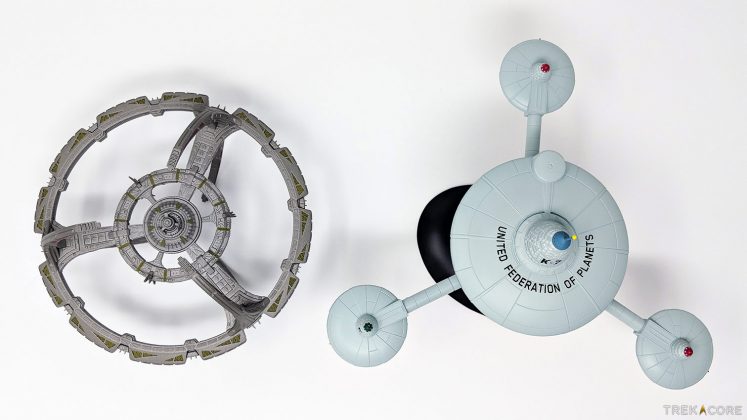December 29 is the 50th Anniversary of “The Trouble with Tribbles,” so with that in mind we’re focusing today — with the assistance of contributor Clive Burrell from Some Kind of Star Trek — on Eaglemoss’ Star Trek space station models, including Deep Space Station K-7 from that classic episode!
First, though, we’ll look back at the first space station to beam down from the retailer: 2014’s starbase Deep Space 9 model, a faithful recreation of the Cardassian setting to our favorite Trek series — and the first of what we hope is several more base recreations.
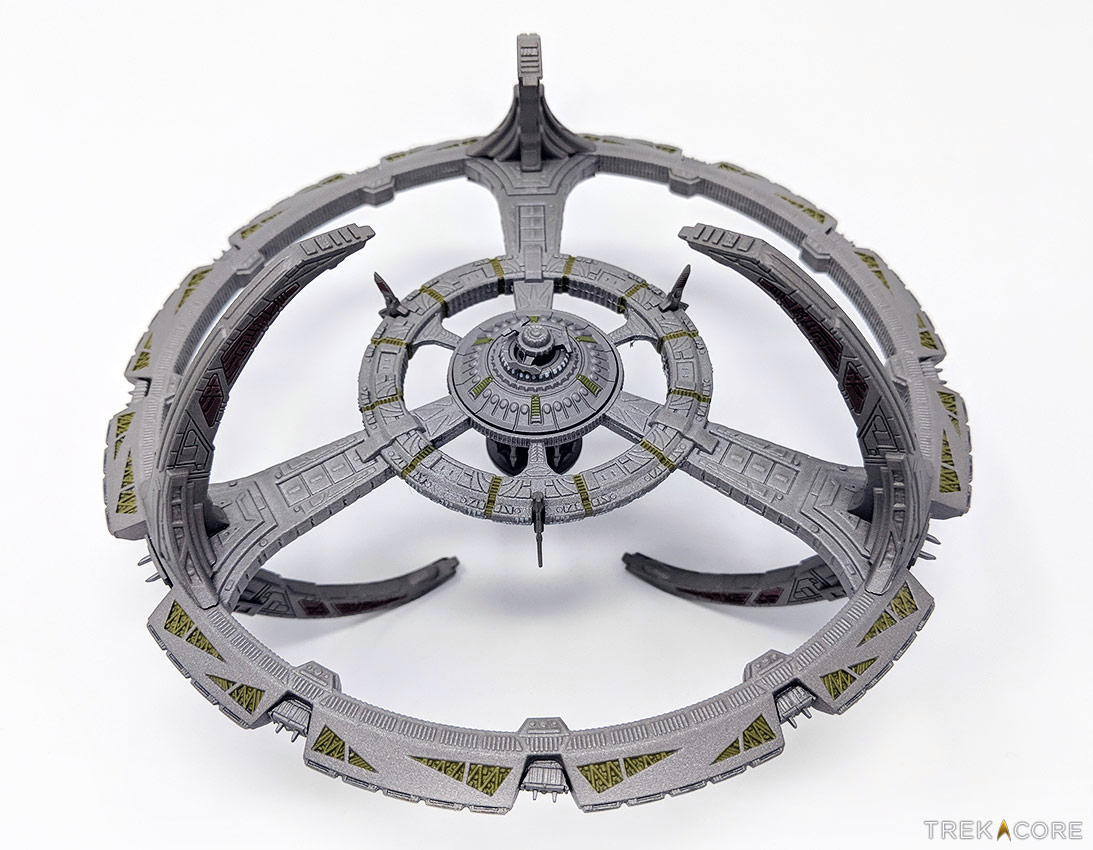 When this special delivery arrived in 2014, it instantly became one of our favourites – Eaglemoss’ Deep Space 9 station model is Grade-A quality, with a level of detail that really stands out even now, a few years later.
When this special delivery arrived in 2014, it instantly became one of our favourites – Eaglemoss’ Deep Space 9 station model is Grade-A quality, with a level of detail that really stands out even now, a few years later.
Being mostly metal – the promenade, habitat ring, and docking ring is one metal piece, with the central core, weapons sails, and pylons are plastic – the Deep Space 9 model is a little heavier than the usual releases. It’s also the first — and so far only — model which doesn’t include a display stand, but the familiar Cardassian design lends itself well to stable positioning on the feet of the three lower pylons.
On the outer docking ring, we have the exposed paneling and docking ports, as well as the three upper and three lower pylons which are perfectly shaped to match the studio model. On the inner habitat ring, the plastic three weapons sails are securely attached to the ring, which also features six molded runabout pads in the die-cast metal.
The more intricate detail though comes in the central hub: Eaglemoss has replicated the oval windows of the Promenade as well as the sensor arrays perfectly. Some of the finer aerials and masts are omitted, but we can understand that from a safety point of view (as well as on a production level) they wouldn’t be the easiest thing to replicate.
Really, though, the only nitpicky issue we have with this model is the lack of windows on the outer docking ring. Considering the lengths gone to on the other sections of the station, it seems like a bit of a glaring omission – but in the end, it doesn’t detract from the overall magnificent aesthetic of this ‘Cardassian monstrosity.’
The joint lines are faultless, the pylons all face the right way, and are at the right angle, and boy does she photograph well, allowing light to really highlight the surface detail and key exterior features.
Size is on her side, and making this a regular-sized issue would have been a total misstep – its six-inch diameter makes it perfect for display on a desktop or shelf… though we wouldn’t turn down a version of this model as part of the larger-scale XL Starships line!
Three years later, after we’ve been asking for more Starbases – from Earth’s Spacedock to the Caretaker Array in the Delta Quadrant – the second space station finally arrived from Eaglemoss in the form of Deep Space Station K-7, the iconic locale of 1967’s “The Trouble with Tribbles” (and revisited in 1996’s “Trials and Tribble-ations”).
The instantly-recognizable station, located near Sherman’s Planet and packed with quadrotriticale grain, has certainly been worth the wait. One of the largest models released to date, measuring nearly 20cm in diameter, you’ll certainly need to clear out some shelf space to make room for this 23rd Century base.
Starting down at the cylindrical base, the series producers have even managed to include a shuttlebay with actual depth — and not just sealed doors – which opens up the main structure; it’s a plastic insert assembled inside the metal base module (which is the only metal section of the model).
The paneling here, and at every point, is kept very simple with everything seeming to spread out from the central core of the station. There are one or two panels highlighted in a darker shade, but these are few and far between on this item.
Travelling vertically, the shuttlebay module is connected by a slender strip of plastic which leads up towards the main central hub of the station, a larger circular section from which the trio of outer modules are attached. As with the other classic designs from the remastered edition of the Original Series, the detail is minor, with the shape and overall style being more dominant rather than adding a lot of flashy finishing touches.
Now we do like a good greeble on our models, but if K-7 was overloaded with surface detail, putting this model alongside the relatively featureless Enterprise NCC-1701 or a Klingon D7 would just feel wrong. Here, minimal is optimal, and from that grey mid-cylinder your eyes are instantly drawn up to the large pointed cap of K-7’s upper habitat section.
The uniform space grey colouring continues on all surfaces of this section, save for the upper antenna, but even on the top of the central unit there are defined panel lines, which do serve to tone down the initial feeling of over-simplification. Eaglemoss has scored the hull paneling very precisely on this circular module, without any messy buildup of paint around the details.
The most prominent markings on K-7 are the deep black identification text on the upper surfaces of the station; the K-7 and UNITED FEDERATION OF PLANETS labelling are implemented in crisp text despite placement over hull textures. Each of the four station ‘points’ are also topped with coloured paint, with modules “KA” and “KB” marked in red and “KC” in green; the antenna on top of the central hub is a deep grey with a bright yellow tip representing the station’s central light.
Unfortunately, like many of the previous models we’ve discussed, the textured windows surrounding that top hub have misaligned white paint applied to the area. The windows painted around the smaller hubs, however, are much more successful as they appear to be simply painted on rather than both painted and textured in design.
There’s a lot to love in the 1960’s basic design here. The lines are so clean and honestly, the lack of detail makes this even more enticing as a piece as it’s so similar to the on-screen studio model featured in “The Trouble with Tribbles” – and really feels like a no-brainer for any collector. While it is more expensive than the subscription issues, the size and presentation is one of the few that seems to have retained its distinct appeal and look from the Original Series.
Unlike the Deep Space 9 station, K-7’s design mandates an included display stand, a claw-shaped appendage that the station simply drops inside. It’s a good fit — and the symmetrical design of the station keeps it centered above the standard metal base -– though beware that it’s not a very tight setting, and will still allow the station to move a bit if you’re not careful when moving it around.
It’s too bad the DS9 station didn’t come with a similar stand to keep it aloft, but it’s certainly less necessary with that design.
The included magazine features a short overview of the station and its role in “The Trouble with Tribbles,” along with its resurrection for Deep Space Nine’s “Trials and Tribble-ations,” but it would have been nice to have a bit more information about the original studio model since this is only the second space station in four years.
* * *
Ben Robinson has said that he’s likely set to take on Spacedock in the future, so hopefully it won’t be another couple of years until the Eaglemoss space station series gets its next expansion.
For now, though, Deep Space 9 and K-7 are great additions to any collector’s display – just make sure to leave enough from on your shelf!
Deep Space 9 retails from Eaglemoss at $44.95 in the USA (and £16.14 in the UK shop), and Deep Space Station K-7 matches the same prices in the US (and goes for £21.24 in the UK).
We’ll be back with our next Official Starships Collection review in early January!
![]()
In Eaglemoss’ US store, TrekCore readers can use promo code TREKCORE at checkout for 10% off any ‘Star Trek’ collectible purchase $60 or greater (some exclusions apply).

